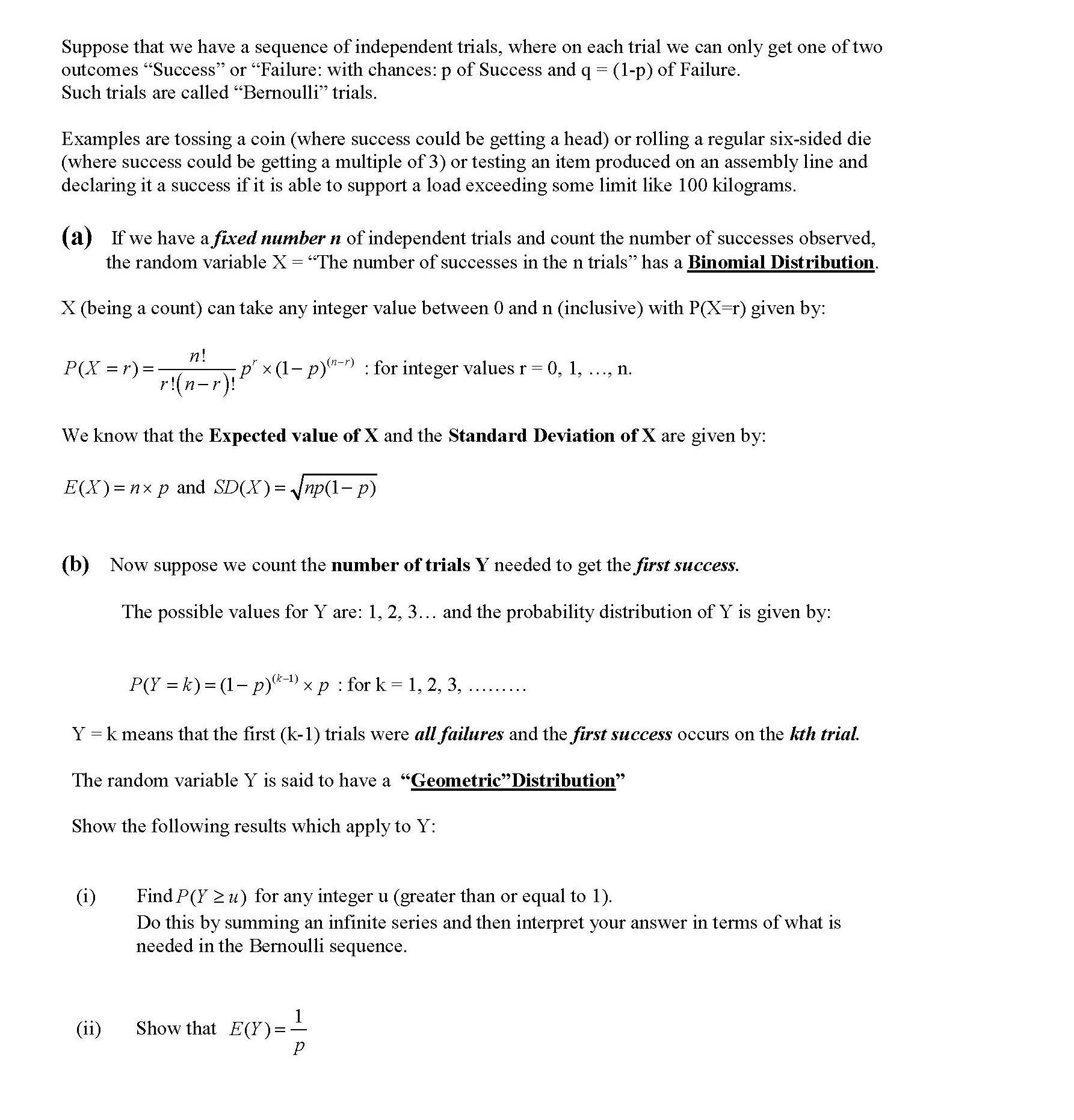Answered step by step
Verified Expert Solution
Question
1 Approved Answer
Suppose that we have a sequence of independent trials, where on each trial we can only get one of two outcomes Success or Failure:

Suppose that we have a sequence of independent trials, where on each trial we can only get one of two outcomes "Success" or "Failure: with chances: p of Success and q = (1-p) of Failure. Such trials are called "Bernoulli" trials. Examples are tossing a coin (where success could be getting a head) or rolling a regular six-sided die (where success could be getting a multiple of 3) or testing an item produced on an assembly line and declaring it a success if it is able to support a load exceeding some limit like 100 kilograms. (a) If we have a fixed number n of independent trials and count the number of successes observed, the random variable X = "The number of successes in the n trials" has a Binomial Distribution. X (being a count) can take any integer value between 0 and n (inclusive) with P(X=r) given by: n! P(X=r) = p' (1- p)(n-) : for integer values r = 0, 1, r!(n=r)! We know that the Expected value of X and the Standard Deviation of X are given by: E(X)=nx p and SD(X)=np(1 p) (b) Now suppose we count the number of trials Y needed to get the first success. The possible values for Y are: 1, 2, 3... and the probability distribution of Y is given by: P(Y = k) = (1 p)() p : for k= 1, 2, 3, Y = k means that the first (k-1) trials were all failures and the first success occurs on the kth trial. Show the following results which apply to Y: The random variable Y is said to have a "Geometric"Distribution" (i) .... (ii) n. 0-1/12 Find P(Yu) for any integer u (greater than or equal to 1). Do this by summing an infinite series and then interpret your answer in terms of what is needed in the Bernoulli sequence. Show that E(Y)=
Step by Step Solution
★★★★★
3.48 Rating (158 Votes )
There are 3 Steps involved in it
Step: 1
SOLUTION i To find PY k where k is an integer greater than or equal to 1 we sum the probabilities of all possible values of Y greater than or equal to k PY k PY k PY k1 PY k2 Using the probability dis...
Get Instant Access to Expert-Tailored Solutions
See step-by-step solutions with expert insights and AI powered tools for academic success
Step: 2

Step: 3

Ace Your Homework with AI
Get the answers you need in no time with our AI-driven, step-by-step assistance
Get Started


